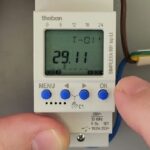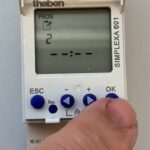A digital time switch is an essential piece of equipment that’s frequently used for controlling ventilation, lighting, heating and watering systems in both commercial and residential applications which require programmed and scheduled operation on a daily or weekly basis. This piece of equipment is not only versatile and functional but also reliable, durable and precise. It features an on and off cycle that you can pick from in a 24-hour time frame.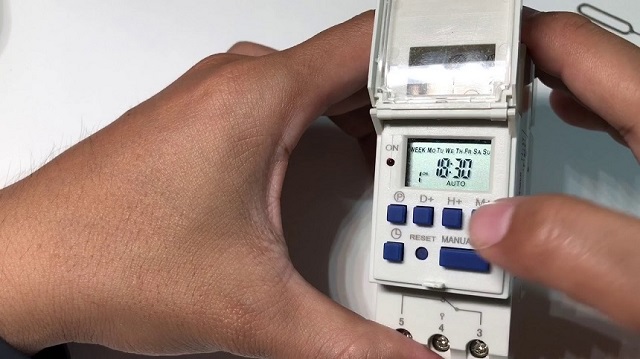
Unlike generic time switches that use clock hands, digital time switches have a numeric display. Some models feature motion sensors which can turn the lights on and off depending on what time it is. These motion sensors can be programmed so that they aren’t operational throughout the entire day, resulting in saved time and energy. But given the fact that these pieces of equipment are more advanced when compared to analog time switches, they’re also more expensive.
There are two main types of digital time switches – astronomical and weekly. Astronomical time switches are location-dependent, meaning the device will need to know your exact location in order to manage the devices and light fixtures based on the time of day. Weekly digital time switches, on the other hand, can be pre-set an entire week in advance, making them time-independent. They’ll control the connected devices however you’ve set them beforehand. Both types of digital switches are easy to install and use. To install one, you’ll need pigtail wiring, wire strippers, connectors and a screwdriver or two.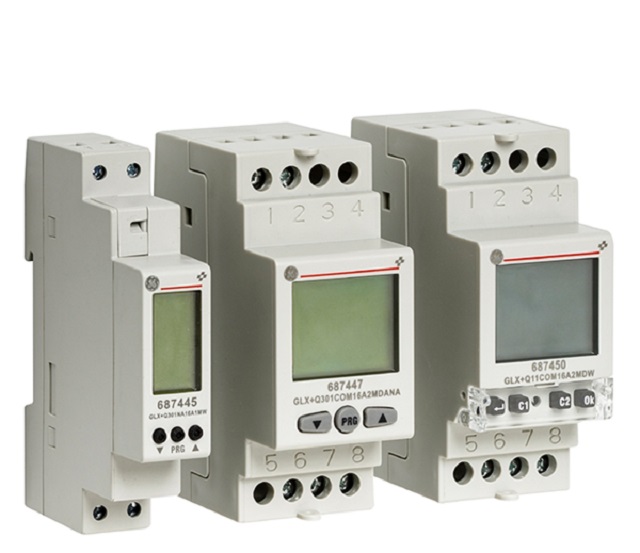
You can fit a digital time switch in a conventional wall switch box. Most digital switches come with wire leads that you can connect directly to the circuit wires with only a wire connector. Unlike analog time switches, digital switches don’t come with a neutral wire connection. Some units come with wire leads that can be connected to the circuit with wire connectors, while others come with screw terminals that can be connected to the circuit wires. Most of the time, you’ll see three wire leads – LINE (black), LOAD (blue) and ground (green). Furthermore, most digital units come with LED screens that make them easier to use and understand. All you have to do on those models is to push a few buttons on the screen to program them based on your needs.
Installing a digital time switch is very similar to installing a conventional wall switch, or even wiring a single-pole dimmer switch. But before you start installing it, make sure the circuit powering the switch box is turned off. Some of the tools you’ll need to install the time switch properly include pigtail wires, wire connectors and strippers, and a screwdriver.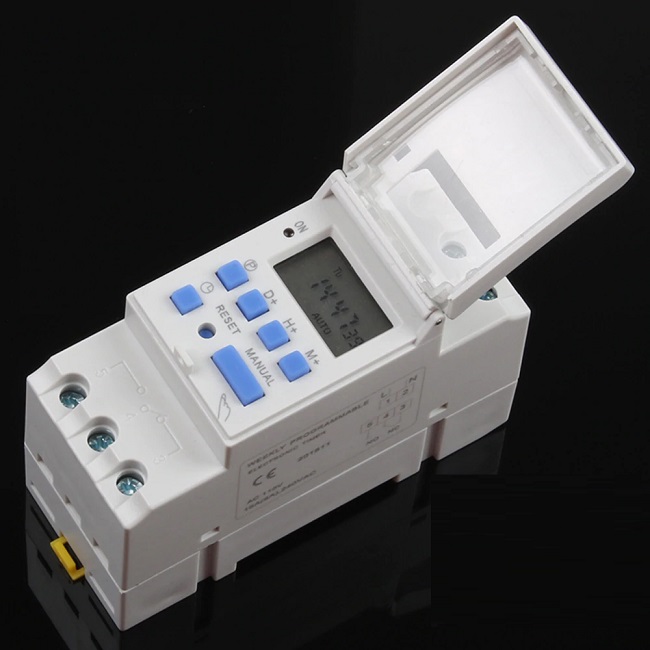
First and foremost, you’ll need to connect the ground wires. Depending on whether the unit you bought has wire leads or a ground screw, you might have to find the circuit grounding wires in the circuit box. Then, use a wire connector to connect the grounding wire to it or you’ll have to use the grounding pigtails to connect the switch to the grounding wires. If the switch features wire leads, you’ll have to use a wire connector to connect the grounding wire, and if it has a grounding screw, you’ll need to use grounding pigtails.
Then, you’ll need to connect the LINE (black) lead, which warrants the use of a wire connector. Connect the LINE lead on the switch to the hot wire coming out of the power source. If your unit features screw terminals instead of wire leads, you’ll have to connect the feed circuit wire to the terminal screw. Once you’ve connected the LINE lead, you can connect the LOAD (blue) lead. This is easily done by connecting it to the circuit hot wire that leads to the device or appliance you want the digital switch to control.
Once all the wire leads are connected, put them carefully inside the box and push the switch into the wall box. Next, attach the cover plate and mounting straps to wrap up the process. And lastly, program the digital switch however you want with the help of the directions that usually come by purchasing a unit.
The applications of a digital time switch are countless. You can use them to power motors, pumps and hydroponic systems. Further, you can use them to regulate lighting fixtures and air-conditioning systems. That being said, these versatile pieces of equipment can be used in both residential and commercial applications. For example, if you own a store, you can use an astronomical time switch to control the window lighting of the store. An automated lighting system can save you money by turning the lights on only when necessary. Such a device won’t break your bank. In fact, you’re saving money in the long run, no matter whether it’s in your home, factory or store, indoors or outdoors.

